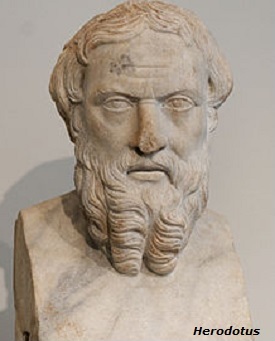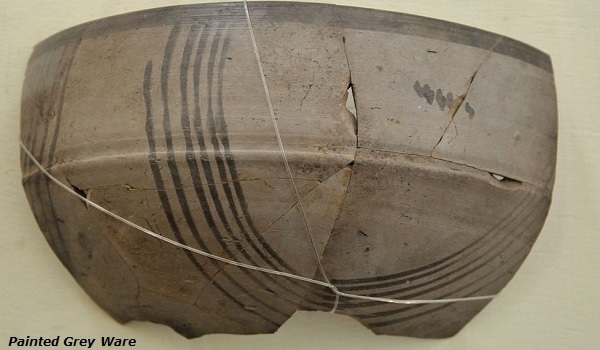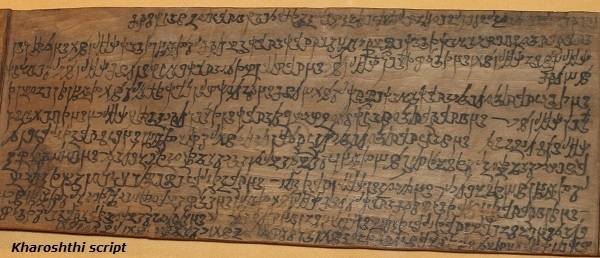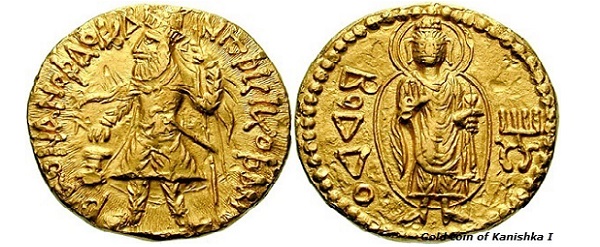Ancient Indian History, Part-7
Ancient Indian History - Sources
Literary and Archaeological records are the two main categories that give evidences of Ancient Indian History.
The literary source includes literature of Vedic, Sanskrit, Pali, Prakrit, and other literature along with other foreign accounts.
The archaeological source includes epigraphic, numismatic, and other architectural remains.
The archaeological explorations and excavations have opened the great landscapes of new information.
Indian Literary Sources
The ancient Indian literature is mostly religious in nature.
The Puranic and Epic literature are considered as history by Indians, but it contains no definite dates for events and kingdoms.
The effort of history writing was shown by a large number of inscriptions, coins, and local chronicles. The principles of history are preserved in thePuranas and Epics.
The Puranas and epics narrate the genealogies of kings and their achievements. But they are not arranged in a chronological order.
 |
| FOUR VEDAS |
The Vedic literature contains mainly the four Vedas i.e. Rigveda, Yajurveda, Samaveda, and Atharvanaveda.
The Vedic literature is in a different language called as the Vedic language. Its vocabulary contains a wide range of meaning and is different in grammatical usages. It has a definite mode of pronunciation in which emphasischanges the meaning entirely.
The Vedas give reliable information about the culture and civilization of the Vedic period, but do not reveal the political history.
Six Vedangas are the important limbs of Vedas. They were evolved for the proper understanding of the Vedas. The Vedangas are −
Siksha (Phonetics)
Kalpa (Rituals)
Vyakarna (Grammar)
Nirukta (Etymology)
Chhanda (Metrics) and
Jyotisha (Astronomy).
Vedanga has been written in the precepts (sutra) form. This is a very precise and exact form of expression in prose, which was developed by the scholars of ancient India.
Ashtadhyayi (eight chapters), written by Panini, is a book on grammar that gives excellent information on the art of writing in sutra (precepts).
The later Vedic literature includes the Brahmanas, the Aranyakas, and theUpanishads.
Brahmanas gives a description of Vedic rituals.
Aranyakas and Upanishads give speeches on different spiritual and philosophical problems.
Puranas, which are 18 in numbers give mainly historical accounts.
 |
| MAHABHARAT, RAMAYANA |
The Ramayana and the Mahabharata are epics of great historical importance.
The Jain and the Buddhist literature had been written in Prakrit and Palilanguages.
Early Jain literature is mostly written in Prakrit language.
Prakrit language was a form of Sanskrit language.
Pali language was a form of Prakrit language which was used in Magadha.
Most of the early Buddhist literature is written in Pali language.
Pali language reached to Sri Lanka through some of the Buddhist monks where it is a living language.
Ashokan edicts had been written in Pali language.
Mahavira and Buddha are considered as the historical personalities (equivalent to the God). They have created Jain and Buddhist religious ideology respectively.
Ancient Books
 |
| JATAK STORY, |
The Buddhist books are called as Jataka stories. They have been given some historical importance because they are related with the previous births of the Buddha. There are more than 550 such stories.
The historic information mentioned in Jaina literature also help us in reconstructing the history of different regions of India.
The Dharmasutras and the Smritis were the rules and regulations for the general public and the rulers. It can be equated with the constitution and the law books of the modern concept of polity and society. For example,Manusmriti.
Dharmashastras were compiled between 600 and 200 B.C.
Arthashastra is a book on statecraft written by Kautilya during the Maurya period. The book is divided into 15 parts dealing with different subject matters related to polity, economy, and society.
The final version of Arthashastra was written in the 4th century B.C.
Kautilya acknowledges his debt to his predecessors in his book, which shows that there was a tradition of writing on and teaching of statecrafts.
Mudrarakshasha is a play written by Visakha datta. It describes the society and culture of that period.
Malavikagnimitram written by Kalidasa gives information of the reign of Pusyamitra Sunga dynasty.
Bhasa and Sudraka are other poets who have written plays based on historical events.
Harshacharita, written by Banabhatta, throws light on many historical facts about which we could not have known otherwise.
Vakpati wrote Gaudavaho, based on the exploits of Yasovarman of Kanauj.
Vikramankadevacharita, written by Bilhana, describes the victories of the later Chalukya king Vikramaditya.
Some of the prominent biographical works, which are based on the lives of the kings are −
Kumarapalacharita of Jayasimha,
Kumarapalacharita or Dvayashraya Mahakavya of Hemachandra,
Hammirakavya of Nayachandra
Navasahasankacharita of Padmagupta
Bhojaprabandha of Billal
Priihvirajacharit of Chandbardai
Rajatarangini, written by Kalhana, is the best form of history writing valued by modern historians. His critical method of historical research and impartial treatment of the historical facts have earned him a great respect among the modern historians.
The Sangam literature is in the form of short and long poems consisting 30,000 lines of poetry, which arranged in two main groups i.e.Patinenkilkanakku and the Pattupattu. It describes many kings and dynasties of South India.
The Sangam was the poetic compilation by a group of poets of different times mainly supported by chiefs and kings.
The Sangam literature was composed by a large number of poets in praise of their kings. Some kings and events mentioned are also supported by the inscriptions.
The Sangam literature generally describes events up to the 4th century A.D.
 |
| HERODOTUS |
Foreign Accounts
Herodotus was dependent upon the Persian sources for his information about India.
Herodotus in his book Histories (written in many volumes) describes about the Indo-Persian relations.
A detailed account of the invasion of India by Alexander was written byArrian.
The Greek kings send their ambassadors to Pataliputra. Megasthenes, Deimachus, and Dionysius were some of them.
Megasthenes came in the court of Chandragupta Maurya. He had written about the Indian society and culture in his book called as ‘Indica’. Though the original work has been lost, but it had been frequently quoted in the works of later writers.
A book ‘Periplus of the Erythrean Sea’ written by an anonymous Greek author who settled in Egypt on the basis of his personal voyage of Indian coast in about A. D. 80 gives valuable information about the Indian coasts.
In the second century A. D., Ptolemy had written a geographical treatise on India.
The Greek writing about India, however, is based on secondary sources. They were ignorant of the language and the customs of the country and hence their information is full of errors and contradictions.
Many Chinese travelers visited India as Buddhist pilgrims from time to time; three important pilgrims were −
Fa-Hien (Faxian) − visited India in 5th century A.D.
Hiuen-Tsang (Xuanzang) − visited India in 7th century and
I-Tsing (Yijing) − visited India in 7th century.
Hiuen-Tsang had given valuable account about Harshavardhana and some other contemporary kings of Northern India.
Fa-Hien and Hiuen-Tsang traveled many parts of the country and they have given an exaggerated account of Buddhism during the period of their visit.
Hiuen-Tsang mentioned Harsha as a follower of Buddhism while in his epigraphic records, Harsha mentions himself as a devotee of Siva. Such contradictions may be considered due to the fact of multi-religious nature of Indian rulers, which might confuse a foreigner.
AI-Biruni gave important information about India. He was Arab scholar and contemporary of Mahmud of Ghazni.
AI-Biruni studied Sanskrit and acquired knowledge of Indian society and culture through literature. Therefore, his observations are based on his knowledge about Indian society and culture, but he did not give any political information of his times.







